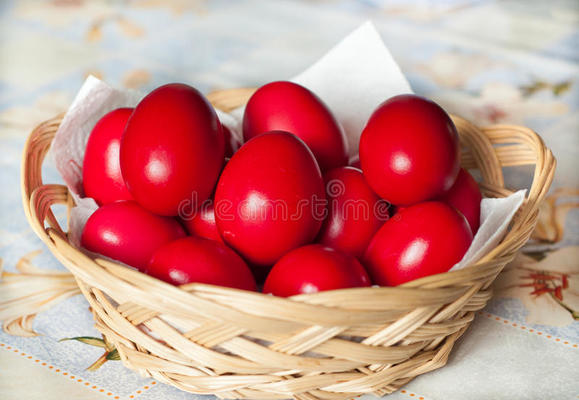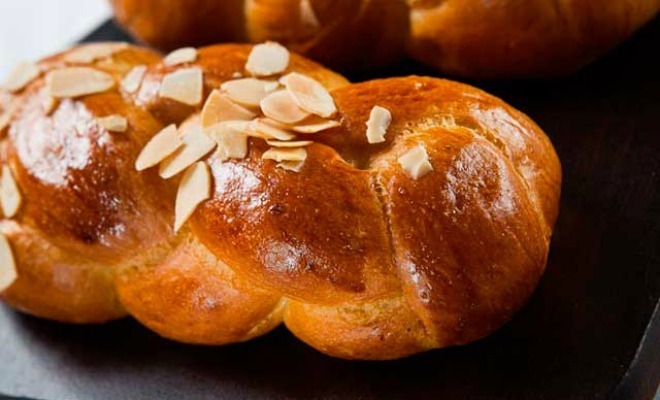Easter - Πάσχα - აღდგომა
Easter in Georgia is the most important holiday in the country apart from Christmas, for it commemorates the essence of the Christian faith, namely the resurrection of Jesus.
Celebrated on a grand scale nationwide, Easter is precluded by a 40-day religious fast which culminates in Holy Week, during which the last days of Jesus’ life are recalled and special liturgies are held daily at every cathedral in Georgia. The most important of these Holy Week liturgies are Maundy Thursday, Good Friday and Holy Saturday.
Maundy Thursday commemorates the Last Supper and Foot Washing by Jesus with foot-washing ceremonies held in cathedrals and monasteries. In Tbilisi, the Catholicos-Patriarch of All Georgia washes the feet of 12 church servants to commemorate Christ washing the disciples' feet. In the evening, all vestments are changed to dark colors to mark the beginning of the Passion.
Good Friday commemorates the crucifixion of Christ, and as such, Georgians sometimes call it Red Friday. Eggs are boiled and painted red as a symbol of Jesus's blood, and on Palm Sunday, the eggs are placed on green wheatgrass. A symbol of new life, resurrection and eternity, people start to grow the grass a week in advance. They also bake an Easter cake called paska. In churches, a liturgy commemorating the removal of Jesus from the cross takes place. During the reading of the death and burial of Jesus, an icon depicting the body of Christ is taken down from a cross, wrapped in a white cloth and hidden.
On the evening of Holy Saturday, people take the eggs and Georgian easter cake to churches to be blessed. The most devoted parishioners gather on Saturday evening to spend the night praying and awaiting the resurrection of Jesus on Sunday morning. A unique service of lamentation is conducted in churches as people await the arrival of the Holy Fire, which miraculously appears annually in the symbolic tomb of Jesus at the Church of the Holy Sepulchre in Jerusalem. The fire is then flown to Orthodox countries such as Greece, Georgia, Romania, Ukraine and Russia, where it is received by church and state leaders.
Easter Sunday begins with loud greetings of "Christ has risen!", which is answered with " He is risen indeed!” The paska bread is eaten and eggs cracked for good luck. In a special game, each person selects an egg and starts tapping it on their opponent's egg. The person whose egg cracks first loses, and at the end of the game, whoever has the fewest broken eggs is the winner.
On the following Monday, Georgians visit the graves of relatives to pay their respects to the dead. (Some also do this on Easter Sunday.) Visitors light candles and roll red Easter eggs across the grave. A small feast follows, with toasts given in honor of the dead and a small portion of the wine poured onto the tombs to "clink" glasses with the deceased. People eat meat dishes, sweets, khachapuri bread and pastries. As Easter in Georgia is a symbol of resurrection and eternal life, the people rejoice, believing that they will be reunited with their relatives in the afterlife.

Easter in Greece - Kastoria
On Holy Thursday it is customary to paint red eggs. The egg, according to tradition, symbolizes the tomb of Christ which was hermetically sealed, like the shell of the egg, but hid in it the "Life", after which Jesus came out and was resurrected. One of the most plausible explanations for the choice of red is that red symbolizes the blood and sacrifice of Jesus.

Here in kastoria the holy thursday women are taking it from bakery or making it at home.Its called tsoureki and its a tradition to eat it in the Sunday of Easter.

In Sifnos
Easter in Sifnos, Greece
Traditionally, Easter eggs are dyed on Holy Thursday, and they are dyed red to represent the redeeming blood of Christ that was shed on the Cross.
On Holy Thursday, the alleys of the settlements will be flooded with the aromas of the fresh-baked “Easter-birds”. These are traditional sweet buns that have the shape of a bird or the shape of other animals and are often decorated with a red egg.
In the evening of Good Friday, the procession of the Epitaph is carried out in a truly devout atmosphere with the faithful chanting as they follow the procession around the streets of the settlements.
Particularly interesting as well is the procession carried out in the port of Sifnos i.e. Kamares. Things here are a little different. The settlement may be lacking in streets, it boasts, however, a gorgeous sea. As such, if the weather allows it, after the procession of the epitaph onshore, the epitaph is taken into a boat and accompanied by other boats the procession is continued by the sea!
And Holy Saturday dawns! After the first Resurrection, the atmosphere is already lighter. Now, the preparations for the Easter dinner begin (“the mastelo”) which will be eaten on the same night. In Sifnos, the festive Easter table takes place after the end of the Resurrection Liturgy, on the night of Holy Saturday. The lamb or goat pieces are washed only with red wine, salt and pepper and flavored with plenty of dill. The lamb pieces are placed in a special ceramic pot with a narrow bottom and very wide opening, the so-called mastelo. At the bottom of the mastelo, vines shoots are placed crosswise, preventing the lamb to touch the bottom. Thus, the meat will cook in its steams and in the steams of the wine. By Saturday noon, all Sifnians have placed their mastelo in wood-fired ovens to cook.
Melopita (gingerbread) is usually offered as dessert. It is a traditional Easter dessert made with honey and a local cheese that resembles to cream cheese flavoured with cinnamon.
In the afternoon of Easter Sunday at the main square, the custom of the Burning of Judas takes place, an effigy of Judas made of fabric, wood, and straw, which after they wander it in the neighborhoods they deliver it to the flames in a festive atmosphere.
The traditional greeting on Easter, and for the next 40 days until the Ascension, is "Christos Anesti" (Christ is risen), followed by the response "Alithos Anesti" (Truly he is risen).